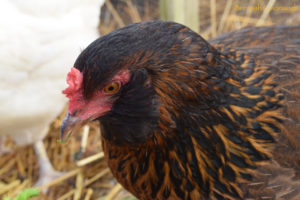I recently figured out how to use the ‘manual focus’ mode on my camera, which has been handy for making good use of my macro lens. Here are some of the little things I found to photograph.


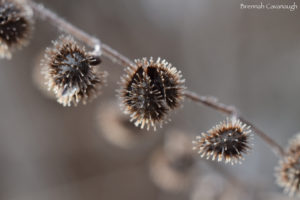
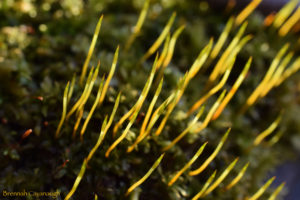
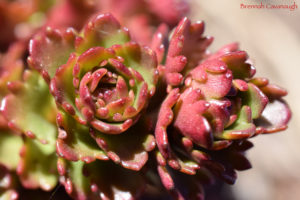
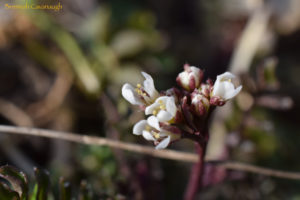


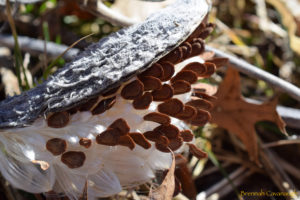
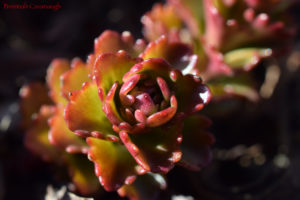

I recently figured out how to use the ‘manual focus’ mode on my camera, which has been handy for making good use of my macro lens. Here are some of the little things I found to photograph.











Yesterday morning, a red winged blackbird was spotted out the kitchen window. He was perched in a cottonwood tree, apparently alone. But red winged blackbirds don’t arrive alone in the spring, and it wasn’t long before we heard the calls of the rest of his flock.
When I lived in Florida, the red winged blackbirds spent the winter hanging around our pond (and other such areas), and now, in Michigan, they nest around the marshy areas in our field. It would be hard not to notice when they arrive; they travel in large flocks, and sit in the treetops chattering loudly. This year, their arrival has coincided quite exactly with the arrival of warmer weather, which has been a bit sudden this year. They seem to have timed things nicely for themselves.
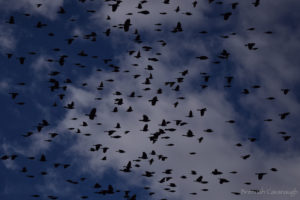
One morning recently we had a pretty frost over everything. I took the opportunity to get out my macro lens. The dead stalks of last fall’s white asters turned out to give me the best pictures. All the pictures I selected for this post are of the frost on the asters.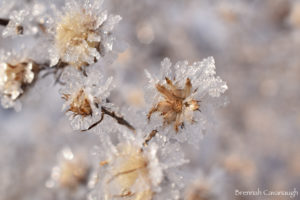
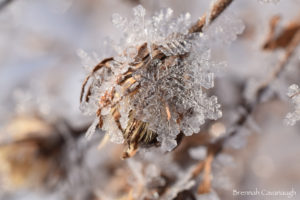
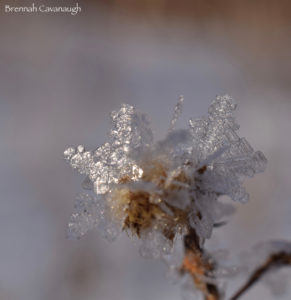
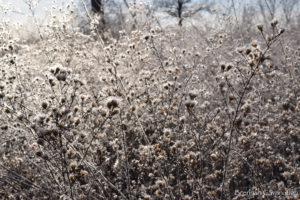
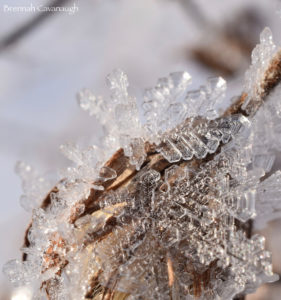
We had a couple of freezing rain storms over the past week, which provided me with a rich source of photography opportunities. Here are a few of my favorites.
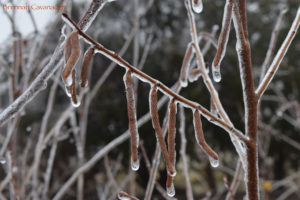
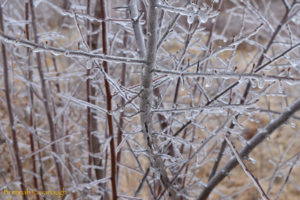

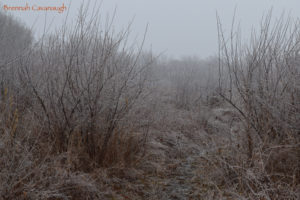

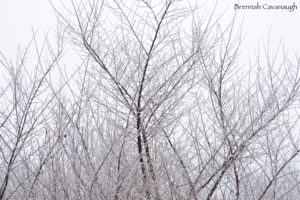
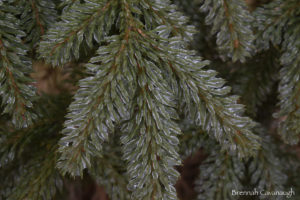
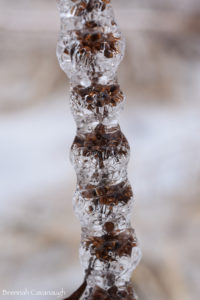
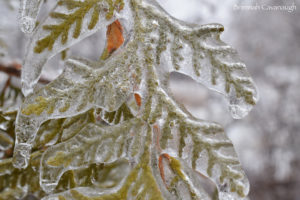
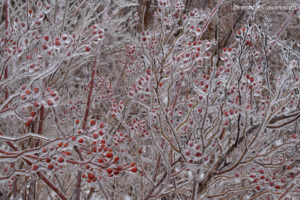
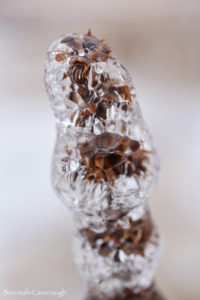
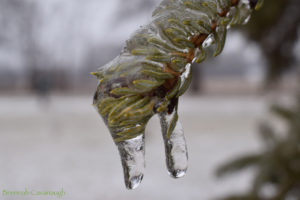


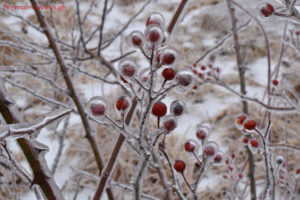
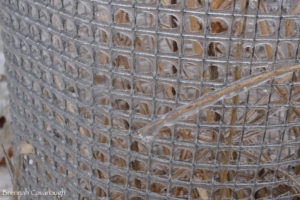
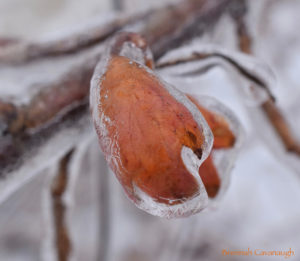
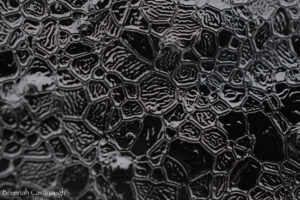
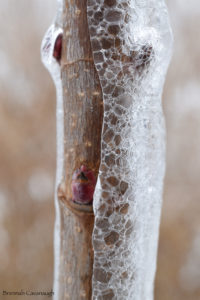

In winter, both the colder weather and the warmer weather have their benefits. The cold keeps things dormant that should be dormant, and helps to reset parasite populations for my bees (and also, the dog loves it). The warmer weather is easier on the chickens, and makes it easy to grow greens in the winter. In general, though, I tend to hope for most of the winter to be fairly cold, because that is what plants and animals of this area are accustomed to and able to handle. It is still possible to grow vegetables in the winter when it is quite cold. And the chickens do all right with fairly cold temperatures when they are well cared for.
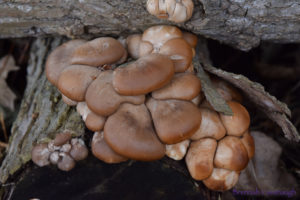

The kind of weather we have been having lately, though, is not beneficial to anything. The temperature rose about seventy degrees in the span of a few days, highlighting the extreme fluctuations that we’ve been having. Earlier this winter I had noticed that some plants were trying to leaf out, and then getting frozen. And now the dog and the cats are shedding as though it is spring, and there are mushrooms growing from the mushroom logs (I don’t know quite as much about mushrooms, but the mushrooms look a bit stunted, so I’m pretty sure frigid weather is not optimal). Everything seems a bit confused right now, unsure what to make of the weather. Though not as visible, honey bees are also prone to this kind of confusion. They may start raising brood, or raise more than they can keep warm at low temperatures that they were not expecting. If the temperatures drop really quickly they may have difficulty getting into their winter cluster in time. Other animals (like chickens) can get acclimated to temperatures that aren’t optimal for them over time, but the constant change keeps them from getting acclimated.
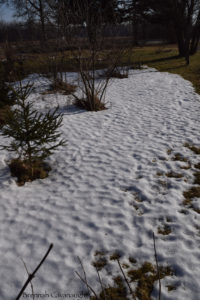
 It may have been a little slow in coming this year, but winter is finally bringing some real cold. And by real cold, I mean that the temperature is taking regular dips below zero degrees (Fahrenheit). At this point, most people aren’t thinking about their gardens, and what they could harvest from them tonight. There are a number of possibilities if you have a hoophouse or cold frame. If not, though, the options are extremely limited. One is a plant most people have never heard of (machè). The only other that I know of, is thyme. To be harvestable in this weather, a plant has to not only still be alive, but also be able to be harvested while the plant is actually frozen, without turning into mush when it is brought into the house and thawed. Most plants’ leaves wilt while they are frozen and revive once the temperature rises above freezing as long as they are still connected to the living plant. (This is part of what having a cold frame or hoophouse helps with; the sun usually warms the interior to at least a little above freezing each day, allowing for the plants to actually be harvested). Thyme leaves don’t even wilt when they are frozen.
It may have been a little slow in coming this year, but winter is finally bringing some real cold. And by real cold, I mean that the temperature is taking regular dips below zero degrees (Fahrenheit). At this point, most people aren’t thinking about their gardens, and what they could harvest from them tonight. There are a number of possibilities if you have a hoophouse or cold frame. If not, though, the options are extremely limited. One is a plant most people have never heard of (machè). The only other that I know of, is thyme. To be harvestable in this weather, a plant has to not only still be alive, but also be able to be harvested while the plant is actually frozen, without turning into mush when it is brought into the house and thawed. Most plants’ leaves wilt while they are frozen and revive once the temperature rises above freezing as long as they are still connected to the living plant. (This is part of what having a cold frame or hoophouse helps with; the sun usually warms the interior to at least a little above freezing each day, allowing for the plants to actually be harvested). Thyme leaves don’t even wilt when they are frozen.
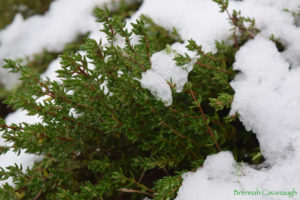
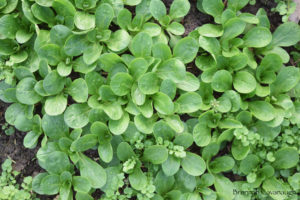
We are expecting even colder weather tomorrow, and the outside thyme may get to the point where it more closely resembles dried thyme than fresh, but it will not turn to mush. Sage is similar, and can be harvested when frozen, but gets dried much sooner than thyme.
(And the thyme in the hoophouse will still be green, as long as the voles don’t get to it.)

There are several full bags of recently harvested salad greens in our refrigerator right now. I wouldn’t be surprised, except that I didn’t plant any this fall. I still wouldn’t really be that surprised; after all, many of last year’s greens did go to seed, but there are a few of the chickens that are living in the hoophouse that have been regularly escaping from the area we have sectioned off for them, and they are desperate for greens at the moment. Still, both of those things are inconsequential compared to the issues we have with voles. Voles are rodents that eat greens, and also dig and gnaw on roots and stems.

And yet, somehow, there are still greens to be harvested.
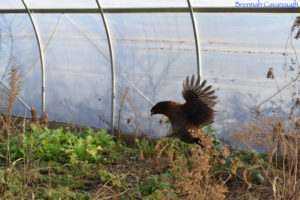
Freezing drizzle isn’t among many people’s preferred weather, nor is it particularly spectacular looking when glanced at casually. It takes a closer look than most would give it to appreciate its effects.
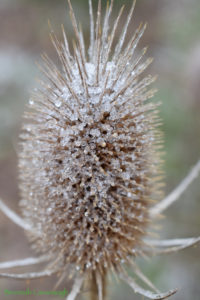
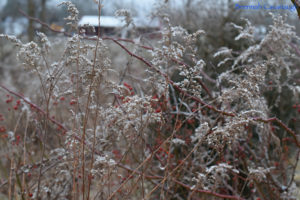
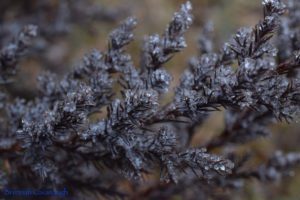

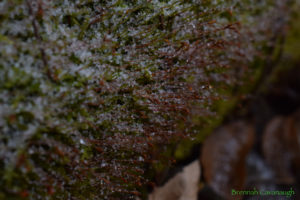
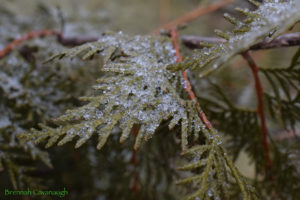
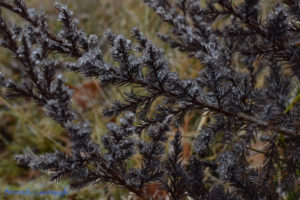
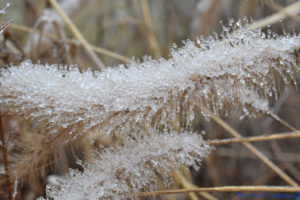
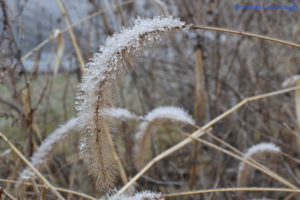

In the spring of 2015 we planted a bunch of spruces, to one day be a windbreak for our house, and also the bee yard. We planted them much closer together than fully grown trees would fit, otherwise we would have had to wait many years before the area would fill out and the trees would have any effect on the wind. As the trees grew, we would eventually have to thin them, much like people do with crops in their gardens. Whenever I do that, I usually try to find a use for the thinnings. In the case of the spruce trees, the ‘thinnings’ are our Christmas trees.

This year is the first year that we were able to harvest one of those trees (the particular tree we harvested was actually from our tree nursery, where we had put a few extra trees we did not yet have space prepared for). It is still small, but it gave the trees around it some room to grow, and we had some tiny ornaments that looked really nice on it.
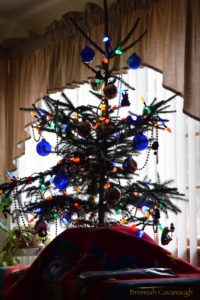
(The title of this post was inspired by my Dad’s sense of humor.)
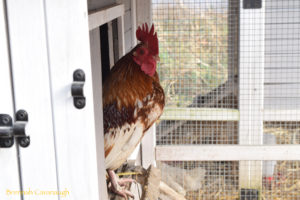 When we first moved the ‘front yard flock’ of chickens into the hoophouse, only one hen was laying eggs, and some of the chickens were missing feathers. Both were things that are fairly normal for the time of year it was; chickens molt, and replace all their feathers so that they can have fresh feathers for winter to keep them warm. This takes a lot of energy for them and also causes them to slow or stop laying altogether for a little while.
When we first moved the ‘front yard flock’ of chickens into the hoophouse, only one hen was laying eggs, and some of the chickens were missing feathers. Both were things that are fairly normal for the time of year it was; chickens molt, and replace all their feathers so that they can have fresh feathers for winter to keep them warm. This takes a lot of energy for them and also causes them to slow or stop laying altogether for a little while.

Last fall, though, they didn’t slow down nearly as much as this year. And some of them seemed to be about done molting, but they weren’t starting to lay again. Chickens seem to lay better during their molt and times of stress (like a fall where the onset of cold is sudden) if their needs are being met well. Egg laying can be a clue to their health, even though there are factors that can cause them to slow down that don’t have to do with stress or their health (such as the shorter hours of daylight in the winter). Trying to judge how much of a slowdown is healthy, and how much could be avoided with good care is one of those things even experienced chicken keepers debate and disagree on. It seemed clear that the situation of the ‘front yard flock’ could be improved at least.

Once in the hoophouse, the chickens were able to move about and scratch around more, searching for greens and bugs and anything else that might be good to eat, and, once they had scratched up some areas, to take dust baths. Dust bathing helps keep parasites off of the chickens, and they seem to really enjoy it. They kick dust or dirt up into their feathers and roll around in the hole they create. When they’re done, they get up and shake out their feathers vigorously.
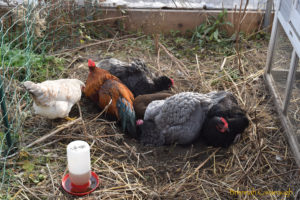
Now, most of the chickens are looking very sleek with their new feathers and they are starting to lay eggs again. And one young hen has grown very friendly and follows me around whenever I go out there…
